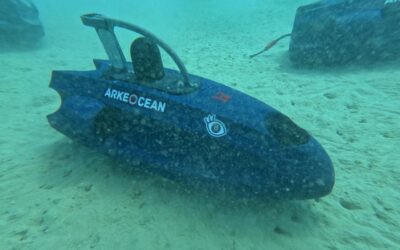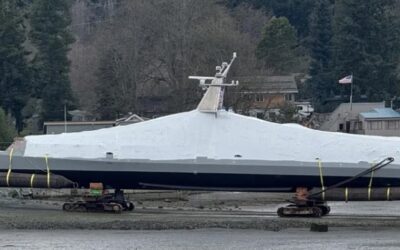Poland’s government will distribute a “survival guide” to all households in the country this year, aimed at preparing citizens…

Total announced yesterday its withdrawal from the two research areas of Western Crete and Southwestern Crete.
“After the completion of surveys carried out in the research areas in Western Crete and Southwestern Crete, TotalEnergies has decided to withdraw from the two blocks,” the company announced, noting that it informed the authorities and its partners about this decision.
“TotalEnergies remains committed to the development of renewable energy sources (RES) in Greece. It continues its activity in Greece through its subsidiary TotalEnergies Marketing Hellas,” the announcement emphasized.
The French TotalEnergies participated together with ExxonMobil and Hellenic Petroleum in the research Consortium in the specific areas.
What comes next
The official announcement of Total confirmed the information that the French company had second thoughts in relation to the two concessions for hydrocarbon exploration in the south and west of Crete.
The departure of the French company, however, was not unexpected, as Total had made its intentions clear in advance at all levels, Capital reported.
In fact, according to information, already about two months ago, when a government official, who had contacts with Total representatives, visited France, it was said that the company now focuses on investments in RES and not on hydrocarbons.
This very information had already mobilized the Greek authorities which are looking for a possible replacement for the French company.
According to the concession agreement, the other two shareholders of the consortium, ExxonMobil and Hellenic Petroleum will have the first say after Total’s withdrawal. Until then, however, the consortium was as follows: Total 40%, ExxonMobil 40%, and ELPE 20%. The two remaining shareholders will be asked to respond if they want to increase their stake by taking Total’s share. Only in case, there is no positive response from the existing shareholders will the way be opened for a new player(s) participating in the consortium.
Information that had come to light stated that the Hellenic Hydrocarbon Resources Management SA (EDEY) had already started the processes in order to find potential interested parties.
Regarding the two concessions in Crete, these are the most promising areas for the existence of large gas fields, but at the same time the less mature ones where the immediate acquisition of seismic data is imperative. The goal is for this to happen in the winter season of 2022 – 2023. The three-dimensional seismic surveys will follow in 2024.
Also read: K. Mitsotakis | Precipitation of gas extraction explorations
According to the planning announced by EDEY, the decision for drilling or withdrawal is expected to be made in 2025 – 2026, while the development of the field will take place in 2027. Production is set for 2029 if everything goes smoothly.
It is worth mentioning that the two sea plots in the south and west of Crete extend to about 40 thousand square kilometers, equal to the size of the Peloponnese. The research phase is divided into three stages: geophysical studies and the acquisition of two-dimensional seismic data in the two blocks. The three-dimensional seismic data will then follow, while finally, the research drilling at a depth of 4 thousand meters will take place.
Regarding the investments required for the development of the potential deposits, according to recent estimates made by the southeast European Energy Institute, for every 1 TCF of potential deposit, investments of 2 billion euros are required, which means that for a possible 10 TCF deposit in Crete € 20 billion in investment is required.
In any case, for the region south of Crete, the southeast European Energy Institute estimates that there are satisfactory indications that could attract large companies, as long as major concessions are made, over 20 thousand square kilometers, as was the case with the concessions in the south and west of the island which attracted Total and ExxonMobil.
Also read: Ιnstitute of Energy for SE Europe (IEΝΕ) | “Serious indications for natural gas deposits in Greece”
READ MORE
Meeting on Police Cooperation Between Cyprus and the USA
During the meeting, issues related to police cooperation, training, and other matters of mutual interest were discussed…
Franco-Cypriot Collaboration Unveils EONIOS |The World’s First Autonomous Underwater Vehicle Swarm System
A groundbreaking technological advancement in underwater exploration and marine ecosystem protection was showcased…
Leonardo UK | Introduction of Its New Remotely Controlled Improvised Explosive Devices System Guardian Shield
Capable of causing significant loss of life and damage to infrastructure, the threat posed by remotely triggered Improvised Explosive…
USMC | NMESIS Ready for Deployment
The US Marine Corps is set to deploy the first NMESIS unmanned anti-ship missile battery, marking a significant…
Cybersecurity and Privacy Info Day at the JOIST Innovation Park
The ever-evolving digital landscape compels businesses and professionals to gain a deep understanding of cybersecurity…
Poland | “Survival Guide” for Citizens in Case of Crises
Poland’s government will distribute a “survival guide” to all households in the country this year, aimed at preparing citizens…
DARPA | Launch of the USX Defiant in the Context of the NOMARS Programme
The Defense Advanced Research Projects Agency (DARPA) and the company Serco have successfully completed the construction…
HAVOC 8X8 | Milrem Robotics’ Solution for the Next-Gen RCV
Milrem Robotics has unveiled the HAVOC 8X8 Robotic Combat Vehicle (RCV), a next-generation autonomous platform.























